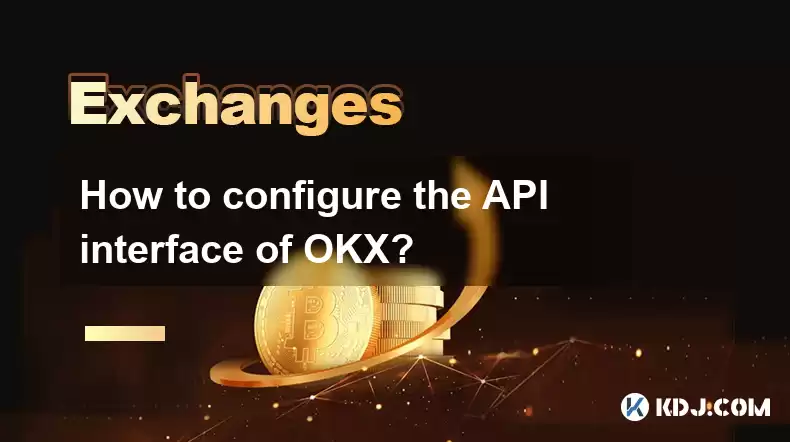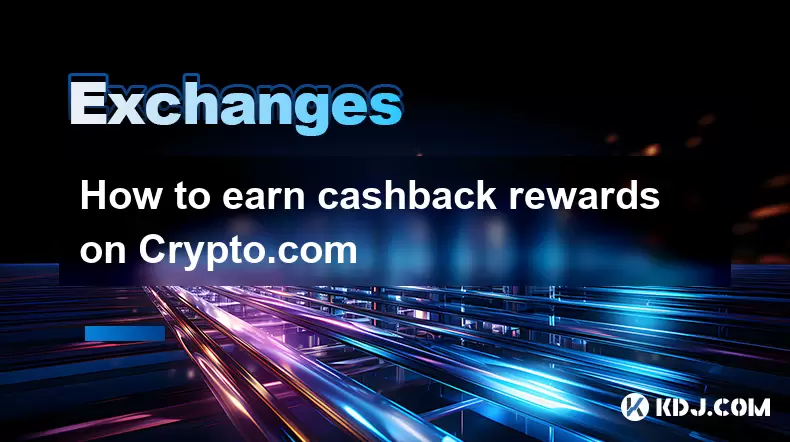-
 Bitcoin
Bitcoin $119700
0.53% -
 Ethereum
Ethereum $4508
5.39% -
 XRP
XRP $3.270
2.86% -
 Tether USDt
Tether USDt $1.000
0.00% -
 BNB
BNB $831.0
2.92% -
 Solana
Solana $189.6
6.89% -
 USDC
USDC $0.9999
-0.01% -
 Dogecoin
Dogecoin $0.2350
2.92% -
 TRON
TRON $0.3500
1.34% -
 Cardano
Cardano $0.8420
6.73% -
 Chainlink
Chainlink $23.26
8.42% -
 Hyperliquid
Hyperliquid $44.42
1.44% -
 Stellar
Stellar $0.4512
3.16% -
 Sui
Sui $3.895
5.15% -
 Bitcoin Cash
Bitcoin Cash $618.7
5.88% -
 Hedera
Hedera $0.2601
4.43% -
 Ethena USDe
Ethena USDe $1.001
0.01% -
 Avalanche
Avalanche $24.45
4.90% -
 Litecoin
Litecoin $128.1
5.41% -
 Toncoin
Toncoin $3.454
1.64% -
 UNUS SED LEO
UNUS SED LEO $9.065
0.44% -
 Shiba Inu
Shiba Inu $0.00001359
3.41% -
 Uniswap
Uniswap $11.42
1.78% -
 Polkadot
Polkadot $4.165
6.36% -
 Cronos
Cronos $0.1664
-0.50% -
 Ethena
Ethena $0.8108
1.79% -
 Dai
Dai $1.000
0.00% -
 Pepe
Pepe $0.00001213
5.22% -
 Bitget Token
Bitget Token $4.438
0.25% -
 Aave
Aave $313.3
5.02%
How to configure the API interface of OKX?
Securely access OKX exchange functionalities programmatically by generating API keys with appropriate permissions, storing them safely (e.g., environment variables), and using a reputable library like the OKX Python SDK. Remember to revoke unused keys and enable 2FA for enhanced security.
Mar 16, 2025 at 06:35 am

Key Points:
- Understanding OKX API Keys and their significance in accessing the exchange's functionalities programmatically.
- Detailed steps on generating API keys within the OKX platform, including security considerations.
- Explaining the different types of API keys and their respective permissions.
- Illustrating how to configure and test the API connection using popular programming languages (Python example provided).
- Addressing common security best practices for handling API keys.
How to Configure the API Interface of OKX?
The OKX API provides programmatic access to a wide range of exchange functionalities, allowing developers to build trading bots, analyze market data, and automate various tasks. Successfully configuring this API involves several crucial steps, starting with obtaining the necessary credentials. Understanding the security implications is paramount to prevent unauthorized access and potential losses.
Generating API Keys on OKX:
Before you can interact with the OKX API, you need to generate API keys within your OKX account. This is a crucial step, as these keys act as your digital signature, granting access to your account's data and trading capabilities.
- Log in to your OKX account.
- Navigate to the "API Management" section, usually found under your account settings.
- Click on "Create API Key."
- You will be prompted to provide a label for your API key (for better organization).
- Carefully review the permissions you grant to this key. Remember, granting excessive permissions increases the risk in case of compromise.
- After reviewing, confirm the creation of your API key. Immediately download and securely store the key and secret. You will not be able to retrieve the secret again.
Understanding API Key Types and Permissions:
OKX offers different API key types, each with varying levels of access. Understanding these distinctions is critical for secure and efficient API usage. Typically, you'll find options for read-only access (for market data retrieval) and read/write access (for placing orders and managing funds). Choose the level of access that strictly matches your application's needs. Avoid granting unnecessary permissions.
Configuring the API Connection:
Once you have your API key and secret, you can start configuring the API connection within your chosen programming environment. The following example demonstrates the process using Python:
First, you'll need to install the necessary OKX API library. Many libraries are available, depending on your preference. A popular choice is the official OKX Python SDK (if available). You would install this using pip install okx-api.
Then, you would write your Python code, including your API key and secret (stored securely, perhaps in environment variables). This code would then use functions provided by the library to interact with the OKX API. A simple example might involve retrieving the current price of a specific cryptocurrency. Remember, never hardcode your API keys directly into your code; use environment variables or secure configuration files.
The library's documentation will guide you on the specific methods and parameters for various API endpoints. This allows you to execute requests, such as fetching market data, placing orders, and managing your account. Thoroughly testing your code with small amounts of funds is crucial before deploying it for larger-scale operations.
Security Best Practices for OKX API Keys:
Security is paramount when working with API keys. A compromised key can result in significant financial losses. Follow these best practices:
- Never share your API key and secret with anyone. Treat them like your passwords.
- Store your API keys securely. Use environment variables, secure configuration files, or dedicated secret management services. Avoid storing them directly in your code.
- Use strong, unique passwords for your OKX account. This adds an additional layer of protection.
- Enable two-factor authentication (2FA) on your OKX account. This adds an extra layer of security, making it harder for unauthorized individuals to access your account even if they obtain your API keys.
- Regularly review and revoke API keys that are no longer needed. This minimizes the risk of unauthorized access.
- Use a reputable and well-maintained API library. This reduces the chances of vulnerabilities in the code you are using to interact with the OKX API.
Frequently Asked Questions:
Q: What happens if I lose my API secret key?
A: You will not be able to access the API functionalities associated with that key. You will need to generate a new API key.
Q: Can I use the same API key across multiple applications?
A: While technically possible, it's strongly discouraged for security reasons. Each application should ideally have its own unique API key with appropriate permissions.
Q: How do I revoke an API key?
A: Log into your OKX account, navigate to API Management, locate the key you wish to revoke, and select the option to delete or revoke it.
Q: What programming languages are supported by the OKX API?
A: The OKX API is generally accessible through various programming languages, but official support and dedicated libraries may vary. Many developers use Python, JavaScript, and others. Check OKX's official documentation for supported languages and libraries.
Q: What are the rate limits for the OKX API?
A: OKX imposes rate limits to prevent abuse and ensure fair access to the API. These limits specify the maximum number of requests you can make within a specific timeframe. Check the official OKX API documentation for details on these limits. Exceeding them may result in temporary access restrictions.
Disclaimer:info@kdj.com
The information provided is not trading advice. kdj.com does not assume any responsibility for any investments made based on the information provided in this article. Cryptocurrencies are highly volatile and it is highly recommended that you invest with caution after thorough research!
If you believe that the content used on this website infringes your copyright, please contact us immediately (info@kdj.com) and we will delete it promptly.
- Unich's OTC Exchange: Surging with $1.2B Volume – What's the Hype?
- 2025-08-13 02:50:11
- MoonBull's Explosive Moves: Your Crypto Whitelist Ticket to Ride!
- 2025-08-13 02:30:11
- MAGACOIN Finance: Don't Miss the Presale Bonus!
- 2025-08-13 02:30:11
- Trump's Crypto Kingdom: $2.4 Billion and Counting
- 2025-08-13 02:50:11
- Solana, LSTs, and SEC Approval: A New Dawn for Crypto?
- 2025-08-13 02:55:12
- Bitcoin's Profit Surge: Unpacking the BTC Value Boom
- 2025-08-13 02:55:12
Related knowledge

How to use margin trading on Poloniex
Aug 08,2025 at 09:50am
Understanding Margin Trading on Poloniex

How to read the order book on KuCoin
Aug 10,2025 at 03:21pm
Understanding the Order Book Interface on KuCoinWhen accessing the order book on KuCoin, users are presented with a real-time display of buy and sell ...

How to read the order book on KuCoin
Aug 12,2025 at 02:28am
Understanding the Basics of Staking in CryptocurrencyStaking is a fundamental concept in the world of blockchain and cryptocurrencies, particularly wi...

How to set price alerts on Kraken
Aug 11,2025 at 08:49pm
Understanding Price Alerts on KrakenPrice alerts on Kraken are tools that allow traders to monitor specific cryptocurrency pairs for price movements. ...

How to earn cashback rewards on Crypto.com
Aug 12,2025 at 02:08am
Understanding Cashback Rewards on Crypto.comCashback rewards on Crypto.com are a feature designed to incentivize users to spend using their Crypto.com...

How to use advanced trading on Gemini
Aug 08,2025 at 04:07am
Understanding Advanced Trading on GeminiAdvanced trading on Gemini refers to a suite of tools and order types designed for experienced traders who wan...

How to use margin trading on Poloniex
Aug 08,2025 at 09:50am
Understanding Margin Trading on Poloniex

How to read the order book on KuCoin
Aug 10,2025 at 03:21pm
Understanding the Order Book Interface on KuCoinWhen accessing the order book on KuCoin, users are presented with a real-time display of buy and sell ...

How to read the order book on KuCoin
Aug 12,2025 at 02:28am
Understanding the Basics of Staking in CryptocurrencyStaking is a fundamental concept in the world of blockchain and cryptocurrencies, particularly wi...

How to set price alerts on Kraken
Aug 11,2025 at 08:49pm
Understanding Price Alerts on KrakenPrice alerts on Kraken are tools that allow traders to monitor specific cryptocurrency pairs for price movements. ...

How to earn cashback rewards on Crypto.com
Aug 12,2025 at 02:08am
Understanding Cashback Rewards on Crypto.comCashback rewards on Crypto.com are a feature designed to incentivize users to spend using their Crypto.com...

How to use advanced trading on Gemini
Aug 08,2025 at 04:07am
Understanding Advanced Trading on GeminiAdvanced trading on Gemini refers to a suite of tools and order types designed for experienced traders who wan...
See all articles

























































































